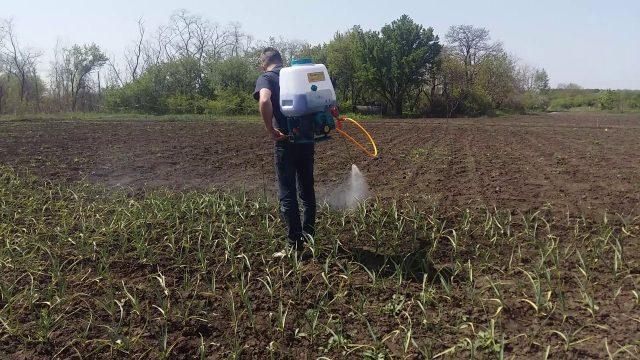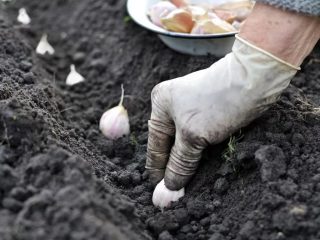Content
Watering garlic after removing the shoots, as well as adding nutrients to the soil, is an integral procedure when caring for the crop. The quality and quantity of the harvest will depend on these actions, as well as on climatic conditions, planting material and soil composition. That is why a competent gardener should definitely know how to properly organize watering and fertilize garlic before and after removing the shoots.

High-quality fertilizing and timely irrigation of garlic beds are the key to a good harvest.
Do I need to water garlic after removing the shoots?
In the first summer month, the plant reaches the peak of its development and begins to produce flower stalks, which summer residents always cut off. But after this, novice gardeners often wonder whether it is necessary to continue watering the beds and what further care the crop requires in order to achieve maximum yield. Farmers with experience in this regard give certain recommendations, if followed, garlic will grow large. One of the main points in this list of rules is proper watering.
Rules and norms of watering
Some gardeners claim that after cutting off the arrows, the plant ceases to need moisture, but this is not entirely true.Judging by the advice given by experts, the crop needs watering, just not as abundantly as in the first months of its development.
The culture is considered unpretentious to watering. She does not like high humidity, but at the same time she does not tolerate drought very well, which is why she simply needs soil moisture during the hot summer. But this should be done no more than once a week and do not use too much water. The optimal norm is 10 liters per 1 sq. m. plot. Before watering, attention should be paid to the plant itself and check the soil inside. Why it is recommended to dig a hole in the garden bed and assess its moisture level.

Watering the crop is necessary, but in small quantities
Feeding garlic after removing the shoots
If you feed winter garlic after removing the shoots, this will enable the heads to become larger and juicier and will help them retain their properties for a long time. The beds need to be fertilized within the allotted time frame so that the beneficial elements get into the bulb and not into the green part of the crop.
The schedule for depositing useful funds is as follows:
- Fertilizers are applied for the first time after the snow melts, when the first green leaves begin to appear on the surface of the earth. At this time, the plant needs an activator and growth stimulator. Usually in May, gardeners water the plantings with urea.
- Then, after a couple of weeks, nitroammophoska or nitroammoska is added to the soil. Do this on a cloudy day.
- The third feeding of garlic often occurs after the shoots are removed, in the second half of June. It involves adding potassium and phosphate compounds to the beds to form a large head (15 g of potassium sulfate and 30 g of superphosphate per 10 liters of water).

In rainy summers, it is useful to spray the beds with Novosil or Epin Extra
Conclusion
After removing the shoots, watering the garlic should be done about once every 7-10 days, depending on the weather conditions. In cool and rainy seasons, the plant does not need moisture, and excess moisture can even lead to rotting of the heads. To obtain high yields, do not forget to feed the garlic, and after removing the shoots, this also remains relevant.








